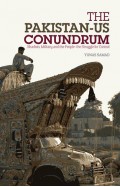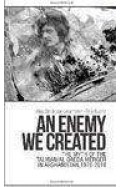- Home
- Categories
- Non Fiction
- Religion & Spirituality
- Sufism
- 'We are Lovers of the Qalandar': Piety, Pilgrimage, and Ritual in Pakistani Sufi Islam
'We are Lovers of the Qalandar': Piety, Pilgrimage, and Ritual in Pakistani Sufi Islam
By: Jurgen Wasim Frembgen
-
Rs 909.00
- Rs 1,010.00
- 10%
You save Rs 101.00.
Due to constant currency fluctuation, prices are subject to change with or without notice.
This book is about Pakistan's most popular Sufi saint Lal Shahbaz Qalandar whose shrine in Sehwan Sharif is one of the most fascinating sanctuaries in the Muslim world. At the time of pilgrimage, this flourishing cult centre becomes a vibrant place of ecstatic religiosity marked by intense forms of devotion. The present ethnographic study is organized around three themes: piety, pilgrimage, and ritual. Thus, its focus is first on visual culture and 'material religion' as well as various aspects of religious aesthetics which highlight how sacred spaces are constructed and shaped. Secondly, it deals with the year-round pilgrimage, mainly investigating pilgrims from Punjab (including a unique life history of a female 'Sufi lineage' from Lahore), but also discussing remarkable ritual agents in the cult. The third theme is the spectacular trance dance known as dhamāl. On February 16, 2017, a suicide bomber executed a horrible massacre among the dancing devotees.
This work, which is the fruit of the author's field-research between 2003 and 2015 in Sindh and Punjab, aims to contribute to a 'Sufism observed' which often seems to be neglected in mainly text-based Sufi studies. It is an academic companion to his earlier At the Shrine of the Red Sufi (OUP, 2011).
This book is about Pakistan's most popular Sufi saint Lal Shahbaz Qalandar whose shrine in Sehwan Sharif is one of the most fascinating sanctuaries in the Muslim world. At the time of pilgrimage, this flourishing cult centre becomes a vibrant place of ecstatic religiosity marked by intense forms of devotion. The present ethnographic study is organized around three themes: piety, pilgrimage, and ritual. Thus, its focus is first on visual culture and 'material religion' as well as various aspects of religious aesthetics which highlight how sacred spaces are constructed and shaped. Secondly, it deals with the year-round pilgrimage, mainly investigating pilgrims from Punjab (including a unique life history of a female 'Sufi lineage' from Lahore), but also discussing remarkable ritual agents in the cult. The third theme is the spectacular trance dance known as dhamāl. On February 16, 2017, a suicide bomber executed a horrible massacre among the dancing devotees.
This work, which is the fruit of the author's field-research between 2003 and 2015 in Sindh and Punjab, aims to contribute to a 'Sufism observed' which often seems to be neglected in mainly text-based Sufi studies. It is an academic companion to his earlier At the Shrine of the Red Sufi (OUP, 2011).
The Closed Valley: With Fierce Friends in the Pakistani Himalayas
By: Jurgen Wasim Frembgen
Rs 760.75 Rs 895.00 Ex Tax :Rs 760.75
Wrestlers, Pigeon Fanciers, and Kite Flyers: Traditional Sports and Pastimes in Lahore
By: Jurgen Wasim Frembgen
Rs 1,012.50 Rs 1,350.00 Ex Tax :Rs 1,012.50
'We are Lovers of the Qalandar': Piety, Pilgrimage, and Ritual in Pakistani Sufi Islam
By: Jurgen Wasim Frembgen
Rs 909.00 Rs 1,010.00 Ex Tax :Rs 909.00
Zubin Mehta: A Musical Journey (An Authorized Biography)
By: VOID - Bakhtiar K. Dadabhoy
Rs 892.50 Rs 1,050.00 Ex Tax :Rs 892.50
The Study Quran: A New Translation and Commentary -- Leather Edition
By: Seyyed Hossein Nasr
Rs 14,395.50 Rs 15,995.00 Ex Tax :Rs 14,395.50
The Origins of Political Order From Prehuman Times to the French RevolutioN
By: Francis Fukuyama
Rs 4,045.50 Rs 4,495.00 Ex Tax :Rs 4,045.50
Manning Up: How the Rise of Women Has Turned Men into Boys
By: Kay Hymowitz
Rs 845.75 Rs 995.00 Ex Tax :Rs 845.75
The Obama Syndrome: Surrender At Home War Abroad
By: Tariq Ali
Rs 1,100.75 Rs 1,295.00 Ex Tax :Rs 1,100.75
The Quest For Meaning: Developing A Philosophy Of Pluralism
By: Tariq Ramadan
Rs 1,185.75 Rs 1,395.00 Ex Tax :Rs 1,185.75
The Pakistan US Conundrum Jihadists The Military And The People The Struggle For Control
By: Yunas Samad
Rs 1,185.75 Rs 1,395.00 Ex Tax :Rs 1,185.75
An Enemy We Created: The Myth Of The Taliban Al Qaeda Merger In Afghanistan 19702010
By: Alex Strick van Linschoten
Rs 4,197.50 Rs 8,395.00 Ex Tax :Rs 4,197.50
WikiLeaks: Inside Julian Assanges War on Secrecy
By: David Leigh & Luke Harding
Rs 637.50 Rs 850.00 Ex Tax :Rs 637.50
The Study Quran: A New Translation and Commentary -- Leather Edition
By: Seyyed Hossein Nasr
Rs 14,395.50 Rs 15,995.00 Ex Tax :Rs 14,395.50
Zubin Mehta: A Musical Journey (An Authorized Biography)
By: VOID - Bakhtiar K. Dadabhoy
Rs 892.50 Rs 1,050.00 Ex Tax :Rs 892.50
The Closed Valley: With Fierce Friends in the Pakistani Himalayas
By: Jurgen Wasim Frembgen
Rs 760.75 Rs 895.00 Ex Tax :Rs 760.75
Wrestlers, Pigeon Fanciers, and Kite Flyers: Traditional Sports and Pastimes in Lahore
By: Jurgen Wasim Frembgen
Rs 1,012.50 Rs 1,350.00 Ex Tax :Rs 1,012.50
'We are Lovers of the Qalandar': Piety, Pilgrimage, and Ritual in Pakistani Sufi Islam
By: Jurgen Wasim Frembgen
Rs 909.00 Rs 1,010.00 Ex Tax :Rs 909.00
The Study Quran: A New Translation and Commentary -- Leather Edition
By: Seyyed Hossein Nasr
Rs 14,395.50 Rs 15,995.00 Ex Tax :Rs 14,395.50












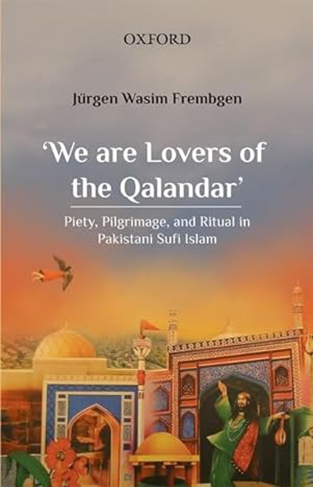


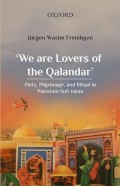
-120x187.jpg?q6)





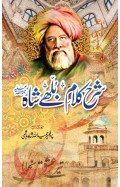

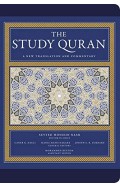

-120x187.jpg?q6)



-120x187.jpg?q6)
